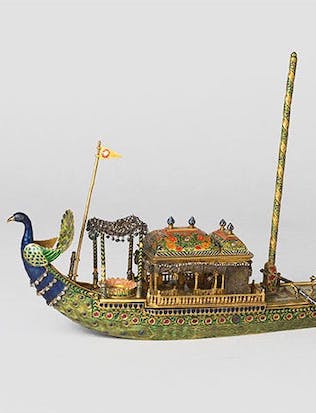I have spent much of this year making a television series about the Royal Collection. The result will be the first televisual history of the British monarchy's collections of fine and decorative arts shown on the BBC since Royal Heritage, presented by Sir Huw Wheldon, more than thirty years ago. We have filmed many times at most of the royal palaces and residences - Windsor Castle, Buckingham Palace, Kensington Palace, Hampton Court, Holyroodhouse Castle, Syon House - generally starting at an ungodly hour of the morning to avoid bumping into the tourists in the public sections, then moving into more restricted areas later in the day. On camera, I suspect my predominant expression is one of bleary-eyed wonderment, provoked by the succession of masterpieces brought out for our contemplation with great patience and generosity by the curatorial staff of the Royal Collection: paintings by such artists as Rembrandt, Vermeer, Van Dyck, Stubbs and Gainsborough; master drawings by Holbein, Michelangelo and Raphael, as well as numerous sheets from what is without doubt the greatest corpus of Leonardo da Vinci's graphic work anywhere in the world. All this I was expecting to find, even if the experience of seeing such works in the flesh reminded me of the near ungraspable depth and breadth of the Royal Collection - and the extent to which it remains, owing perhaps to its necessary dispersal among a multitude of buildings, somewhat underappreciated as the unparalleled singular entity that it actually is.
But what I had never quite realised, before spending so much time in the royal palaces, was just how great the Royal Collection is as a repository of the decorative arts. Almost every object you pass, in Windsor Castle or Buckingham Palace, is either the finest, or one of the finest, of its kind....


